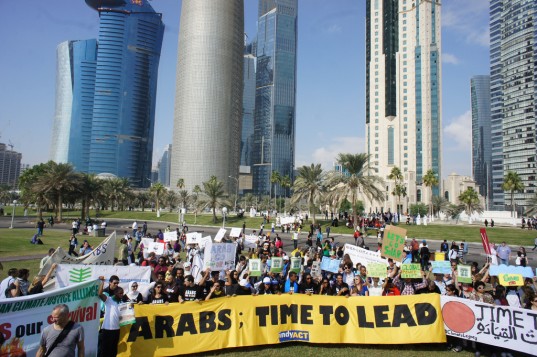The Middle East and North Africa (MENA) must keep pace with the rest of the world and push for a future fully powered by renewable energy, says IndyACT, the leading Arab non-governmental organization working on climate change policy.
Dynamic change is taking place in the global energy sector, with renewable energy becoming mainstream in many countries, including MENA nations. Abu Dhabi’s concentrated solar power plant (CSP) Shams 1 has a 100 MW capacity and is the largest renewable energy project in operation in the Middle East. Jordan is constructing its first utility-scale windfarm in Tafila which will have a final installed generating capacity of 117 MW). This past year, Egypt opened the Middle East’s largest wind energy power station in the Red Sea’s Gabal al-Zeit area. It is capable of adding 800 million kW hours to the national electricity grid each year, according to Mohamed al-Sobky, executive chairman of the Egyptian New and Renewable Energy Authority.
MENA must continue to embrace clean energy innovation to transition to a fully renewable energy future.
Global expansion in renewable energy has meant real decreases in cost, so that solar photovoltaic (PV) and wind power are now economically competitive despite a global subsidy system weighted in favor of fossil fuels, which according to the International Energy Agency receive an annual subsidy of US$550 billion, more than twice the subsidy for renewables. Even with the 45% drop in oil prices in 2014, solar power remains competitive in this region.
Original article by Laurie Balbo
Continue reading at Green Prophet:
MENA must push – NOW! – for 100% renewable energy




















Comments